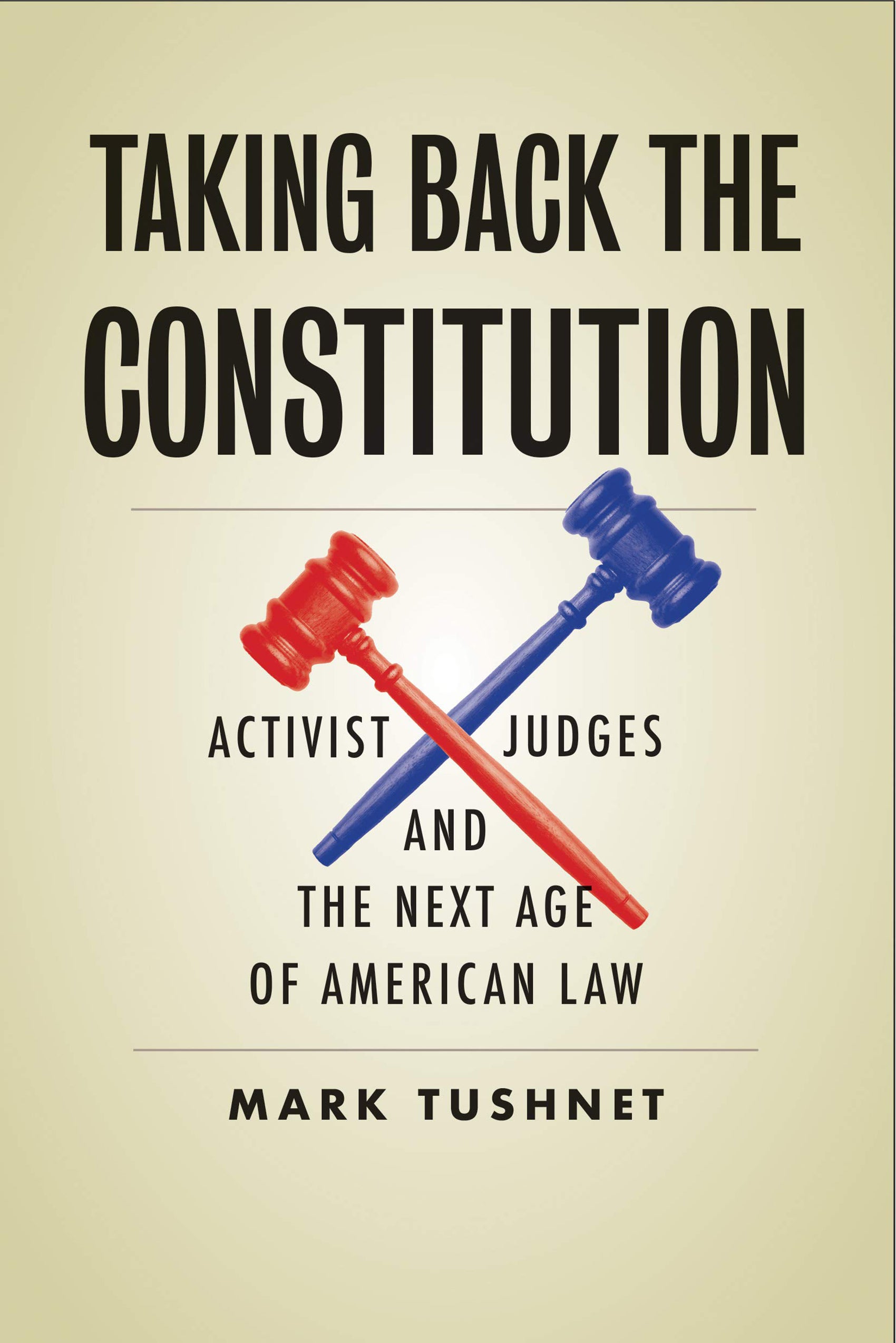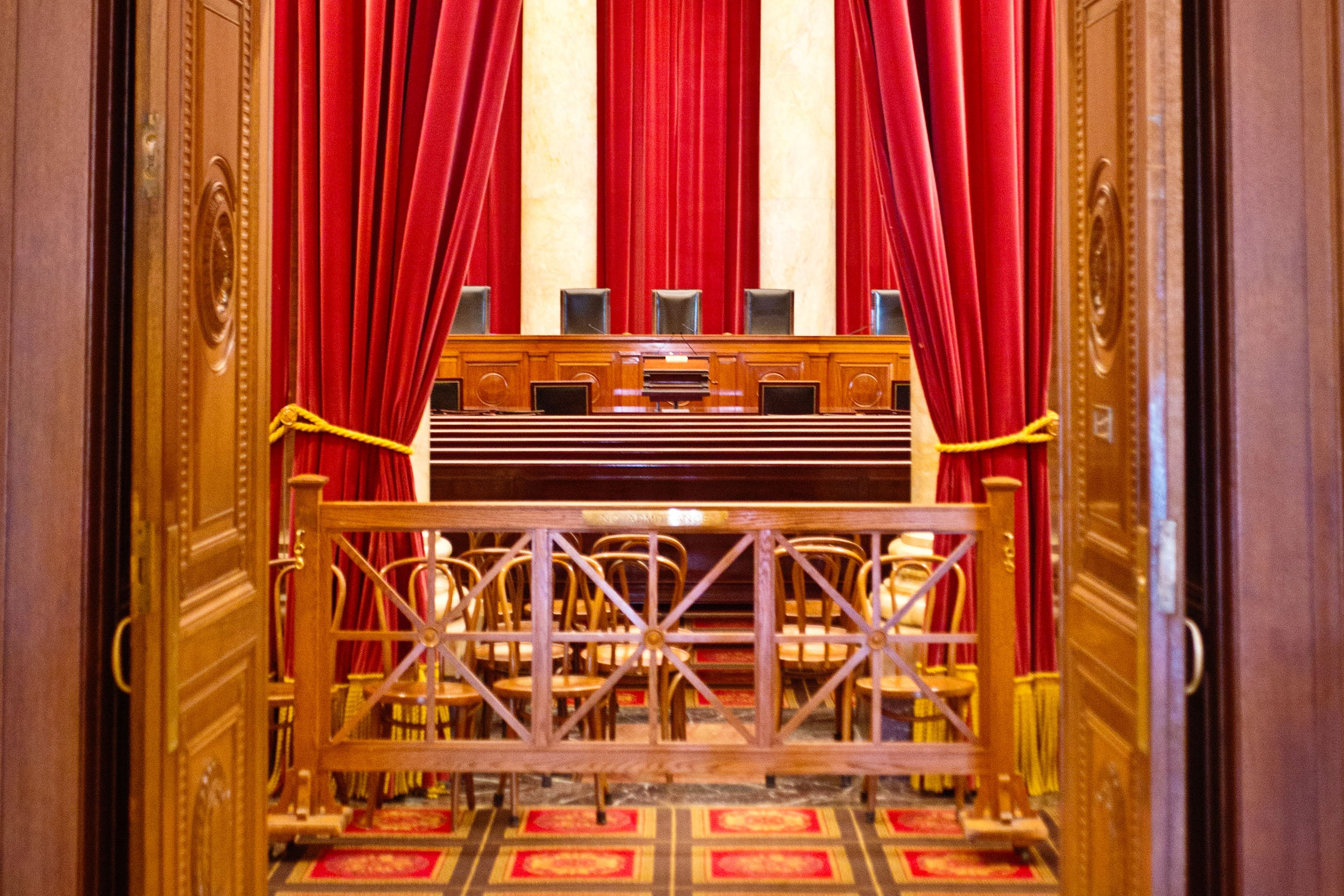
With President Donald Trump and the Republican-dominated Senate poised to nominate and confirm a replacement for the late Supreme Court Justice Ruth Bader Ginsburg ’56-’58, many Democrats are crying foul. When Justice Antonin Scalia ’60 died in February 2016, Senate Majority Leader Mitch McConnell denied President Barack Obama’s [’91] nominee, Merrick Garland ’77, a confirmation vote, citing the election nine months later. The new president selected and the Senate ultimately approved Brett Kavanaugh to fill Scalia’s vacant seat.
To counter what they view as Republicans’ unfair and hypocritical tactics, some Democrats have revived the idea of adding more justices to the Supreme Court if they manage to win both elected branches of government on November 3rd. In an article published in 2019, Harvard Law School Professor Mark Tushnet predicted that, despite the legacy of President Franklin D. Roosevelt’s failed attempt to pack the Court with allies in 1937, “increasing politicization of the Supreme Court … may have made Court-packing thinkable again.” Tushnet chairs the advisory board of Take Back the Court, an organization that advocates for structural reform of the Supreme Court. He is also the author of the recent book, “Taking Back the Constitution: Activist Judges and the Next Age of American Law.”
In an April 2020 interview with Harvard Law Today, Tushnet, now an emeritus professor, discussed the possibilities for, and potential pitfalls of, any effort by a potential incoming Democratic majority to pack the Supreme Court.
Harvard Law Today: How is the number of Supreme Court justices decided? In other words, why nine?
Mark Tushnet: The number of Supreme Court justices is set by statute and has varied from six to 10 (briefly, during the Civil War era). It’s been set at nine since 1869, and many constitutional scholars think that the failure of FDR’s so-called “Court-packing” plan in 1937 created a convention that the Court’s size shouldn’t be changed if the purpose is to change the tenor of its decisions.
HLT: You write that some commentators, scholars and former Democratic presidential candidates have expressed openness to increasing the number of Supreme Court justices. Why?

Tushnet: There are some facts about the Court today that suggest to Democrats that something has gotten out of hand. Despite the fact that Democrats have won the presidency about as often as Republicans, the last time there was a chief justice nominated by a Democratic president was in 1953, and the last time a majority of the Court’s justices were nominated by a Democratic president was in 1969. The fact that Supreme Court seats open up either randomly or, more troublingly, because sitting justices time their retirements so that “their” party can replace them has led some Democrats to believe that the traditional alignment between the overall political system and the Court—when looked at over a decent (say 10-year) period—has come unstuck, and that they should consider whether or how to reestablish that alignment.
HLT: Can you remind us about the last time a U.S. president attempted to “pack” the Court?
Tushnet: In 1936, the Supreme Court issued a number of decisions invalidating central features of the New Deal programs sponsored by President Franklin Delano Roosevelt, and FDR and his supporters feared that more was to come (including the invalidation of the National Labor Relations Act and the Social Security Act, probably the key New Deal programs). To forestall that, FDR proposed to add up to six additional justices to the Court, disingenuously presenting the plan as a “good government” proposal to improve the Court’s workings by adding one justice for each justice over the age of 70½.
The plan ran into strenuous opposition in the Senate, though (in my view) its success was touch-and-go until the end. The plan had the support of the powerful Senate majority leader Joseph Robinson, whom FDR had promised to appoint to one of the new positions, and it failed only after Robinson’s unexpected death during the very hot summer of 1937. (I discuss much of this in my forthcoming history of the Supreme Court during the 1930s, to be published next year as part of The Oliver Wendell Holmes Devise History of the Supreme Court.)
Related Audio

In March 1937, President Franklin D. Roosevelt used a “fireside chat” to argue in favor of legislation that would have enabled him to nominate up to six additional justices to the U.S. Supreme Court. (Photo/Audio: Franklin D. Roosevelt Presidential Library)
HLT: What would the advantages be for a newly elected Democratic majority?
Tushnet: If Court-packing succeeded (a big if, of course), it would mean that Democrats would already have won control of Congress and the presidency. With that control, they would enact their own “progressive” agenda, including election reform, and environmental and labor legislation. Some of their programs would be vulnerable to constitutional challenges and the Court as currently constituted might well accept at least some of the challenges. Packing the Court would prevent the Court from obstructing initiatives on both the national and state levels that Democrats favor.
HLT: Are there disadvantages that should be considered?
Tushnet: The most commonly cited disadvantages of Court-packing are two. First, enacting it would be politically difficult, and would divert attention from other higher-priority items for the Democratic Party’s leaders and might even weaken the party’s power so much that it wouldn’t be able to accomplish its substantive agenda. Second, many important constituencies within the Democratic Party believe that the Supreme Court is, and will continue to be, an important defender of their rights, and offer decisions like Brown v. Board of Education (invalidating school segregation), Roe v. Wade (protecting the right to choose), and Obergefell v. Hodges (the gay marriage decision) as examples. These groups fear that packing the Court will further strengthen the view, already common, that the Court is “merely” another actor in politics and make it more difficult for the Court to serve as what these groups believe to be an impartial defender of important constitutional rights.
HLT: In recent decades, it seems the process of appointing Supreme Court justices has become increasingly politicized with each successive administration. Is that an accurate analysis and, if so, when did that process start, and what are some of the causes?
Tushnet: Appointing Supreme Court justices has always been “political,” in the sense that the process mirrors the way in which other public decisions are made at the time. So, for example, in times when politics were dominated by patronage and pork-barrel politics, Supreme Court nominations were forms of patronage politics. (In one notable case, for example, an extremely well-qualified nominee was defeated because he came from what a majority of the Republican-controlled Senate thought was the “wrong” faction of the Republican Party.) What we’ve seen recently is, structurally, no different. Politics generally have become quite polarized around competing visions of good public policy, and that’s reflected in the politics associated with Supreme Court nominations as well.
HLT: What do you think the effect of eliminating the filibuster rule, so that it now takes only 51 votes (as opposed to 60) in the Senate to approve a new justice, has been or will be?
Tushnet: Eliminating the filibuster rule was both the product of hyperpolarized politics and a cause of further hyperpolarization. In the context of polarized parties that are ideologically homogeneous (and where even outliers within each party—moderate Republicans and relatively conservative Democrats—find it advantageous to go along with the leadership), the confirmation process involves either completely obstructing a nominee from a party that doesn’t control the Senate (the example of Merrick Garland) or rubber-stamping the president’s choices (as with President Trump’s two nominees).
HLT: Is there any concern that an attempt by Democrats to “pack the Court” might escalate this process? For instance, would Republicans take away newly added justices once they returned to power, or add even more to overcome the Democratic advantage?
There’s always a risk that “tit-for-tat” politics, or what I’ve called constitutional hardball, will lead to a “downward” spiral, in which things get worse and worse. Note, though, that a successful Democratic effort to pack the Court would require majorities in both houses of Congress and control of the presidency, which means that it would last at least through a presidential term. And undoing the result—by further Court-packing, for example—would require that Democrats lose control of all three institutions.
HLT: Do you see any obvious solutions to this challenge?
Not really: Democrats who support structural reforms involving the Supreme Court have to acknowledge that changing the Court structurally runs the risk of a downward spiral. The question for them is whether the potential benefits of reform outweigh the obvious risks. At this point, I doubt that many Democratic leaders do think that the benefits outweigh the risks, but that might change if the overall political environment changes.
